Default spaces
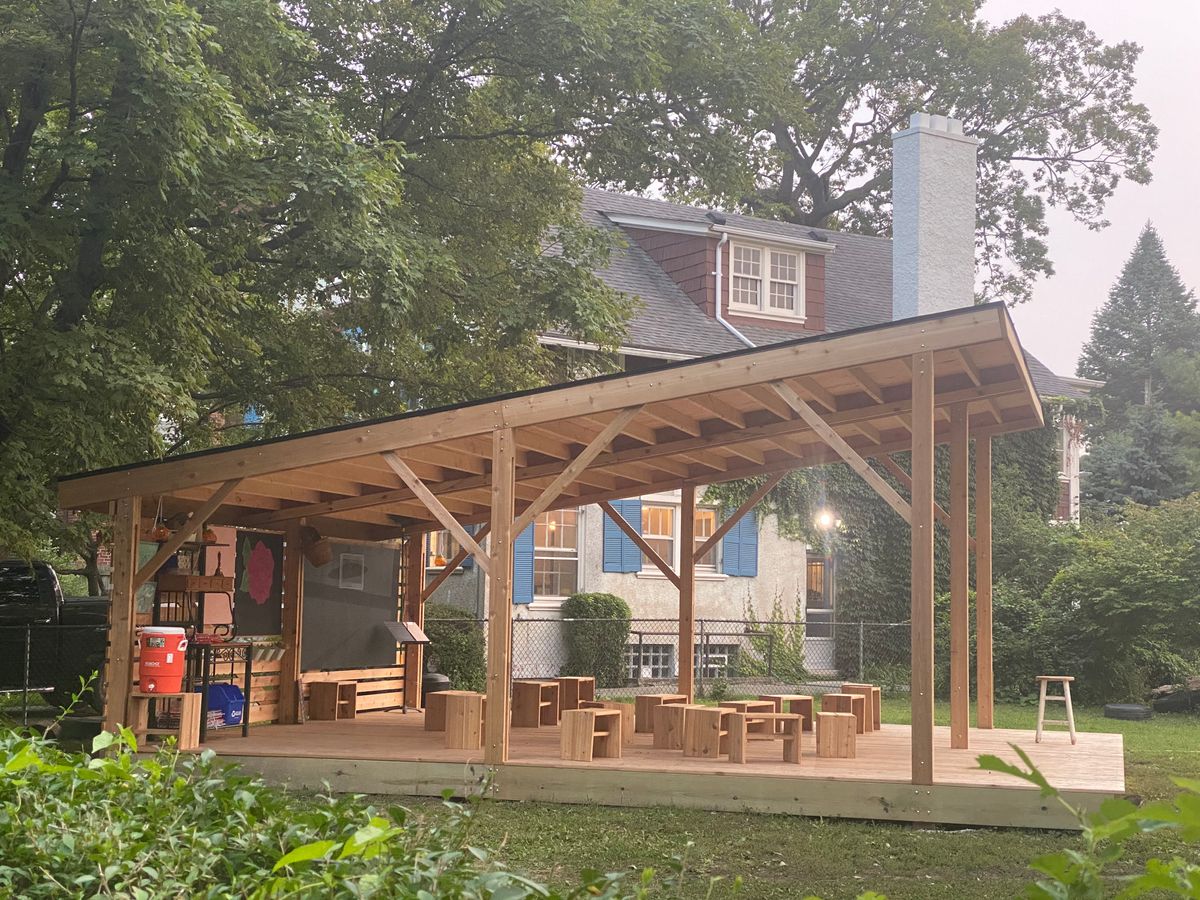
We don't spend enough time thinking about the spaces where we spend the majority of our lives.
At least not in ways that demonstrate agency and autonomy.
Cities, schools, offices, homes, vehicles, department stores, malls. Most of these end up being default choices resulting in a lot of time spent in default spaces.
You might argue that we do think a lot about some of these, especially our homes, but even those choices end up being default or default adjacent. A majority of the people I know, myself included, irrespective of which generation we belong to, have very similar criteria for selecting where to live. Our home buying or apartment renting decision spreadsheets, if we superimposed them, would look very similar.
That being said, each one of these spaces does imply a litany of choices. Choices are hard and consume time and energy and I don't think endless choices are productive. So default choices are certainly not all bad all the time. Like Steve Jobs choosing his black turtle necks.
I believe more and more strongly however that putting more thought into the selection and design of our spaces will have an outsized impact on our lives. And that this needs to go beyond the design of just our home offices.
I walked by this outdoor classroom setting in Detroit last fall and wondered how much more I would have enjoyed school if I were not in confined, constrained spaces.
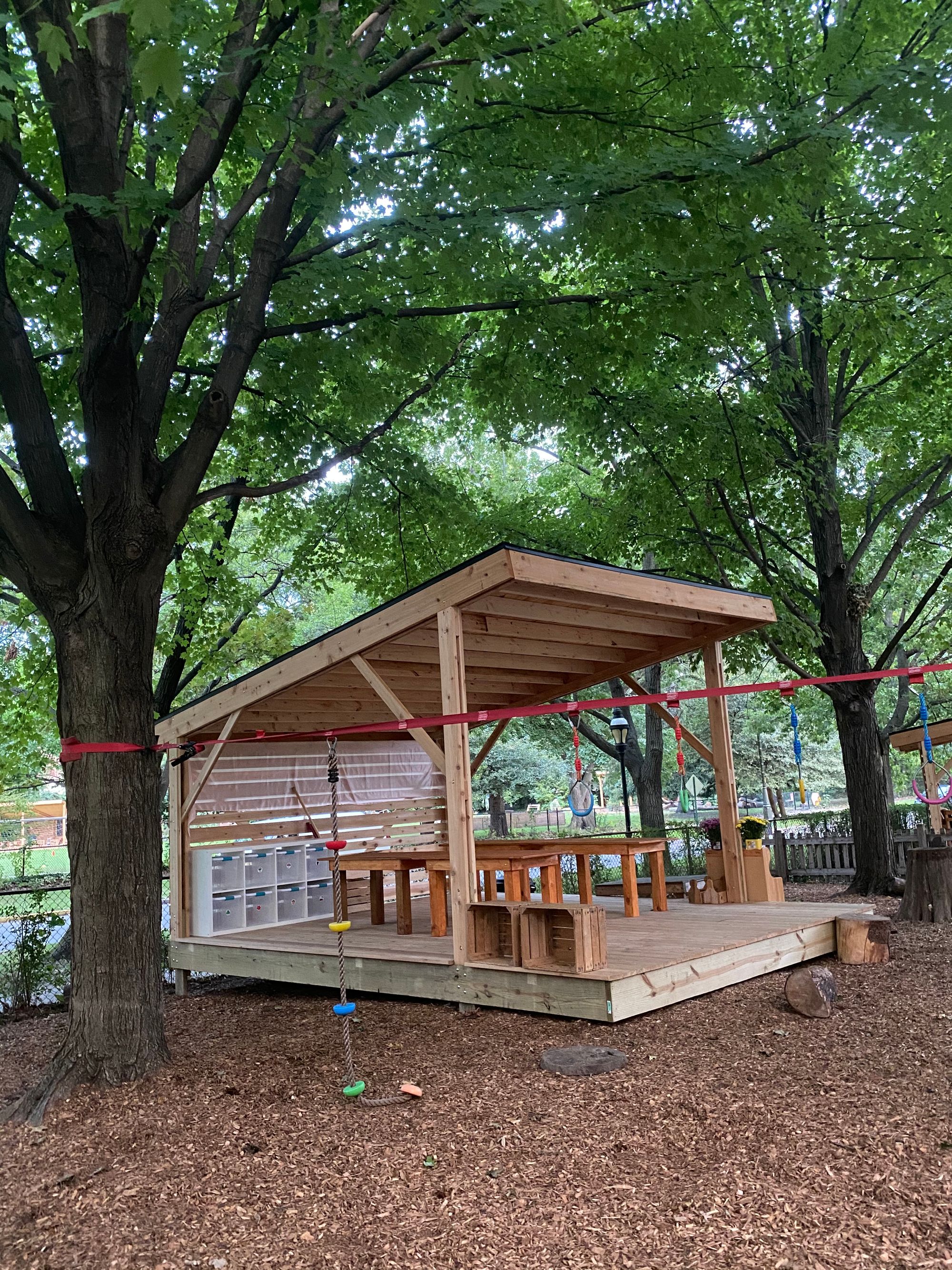
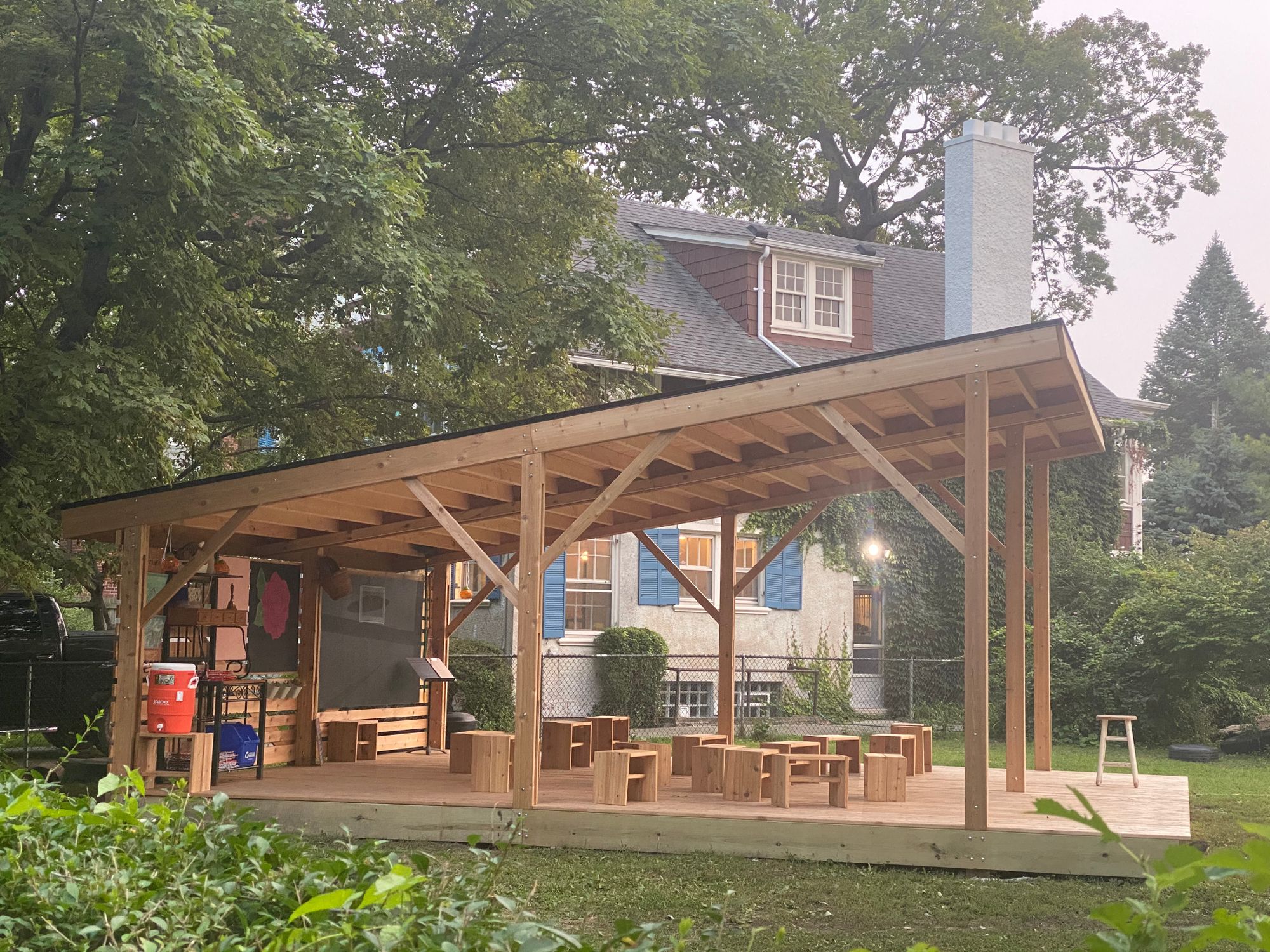
School, as I remember it, was about obedience. Walled classrooms, strict schedules, and one-size-fits-all curricula. Artificial light. Attempts to shut out all distractions. A focus on productivity instead of play. Rote instead of creating.
The space created above is similar to some of my childhood classrooms in some ways. There is a chalkboard, a podium for the teacher, benches for the students, but of course, it is very different in many ways.
By having young children sit outside you are inviting distraction and restlessness. The antithesis of most default classrooms and the bane of many of my old teachers. But I would argue this is great! Distraction and boredom are often the greatest teachers allowing us to slowly, over time, identify and articulate what moves us. It leads us towards play and from this play, tinkering, and iteration often comes learning.
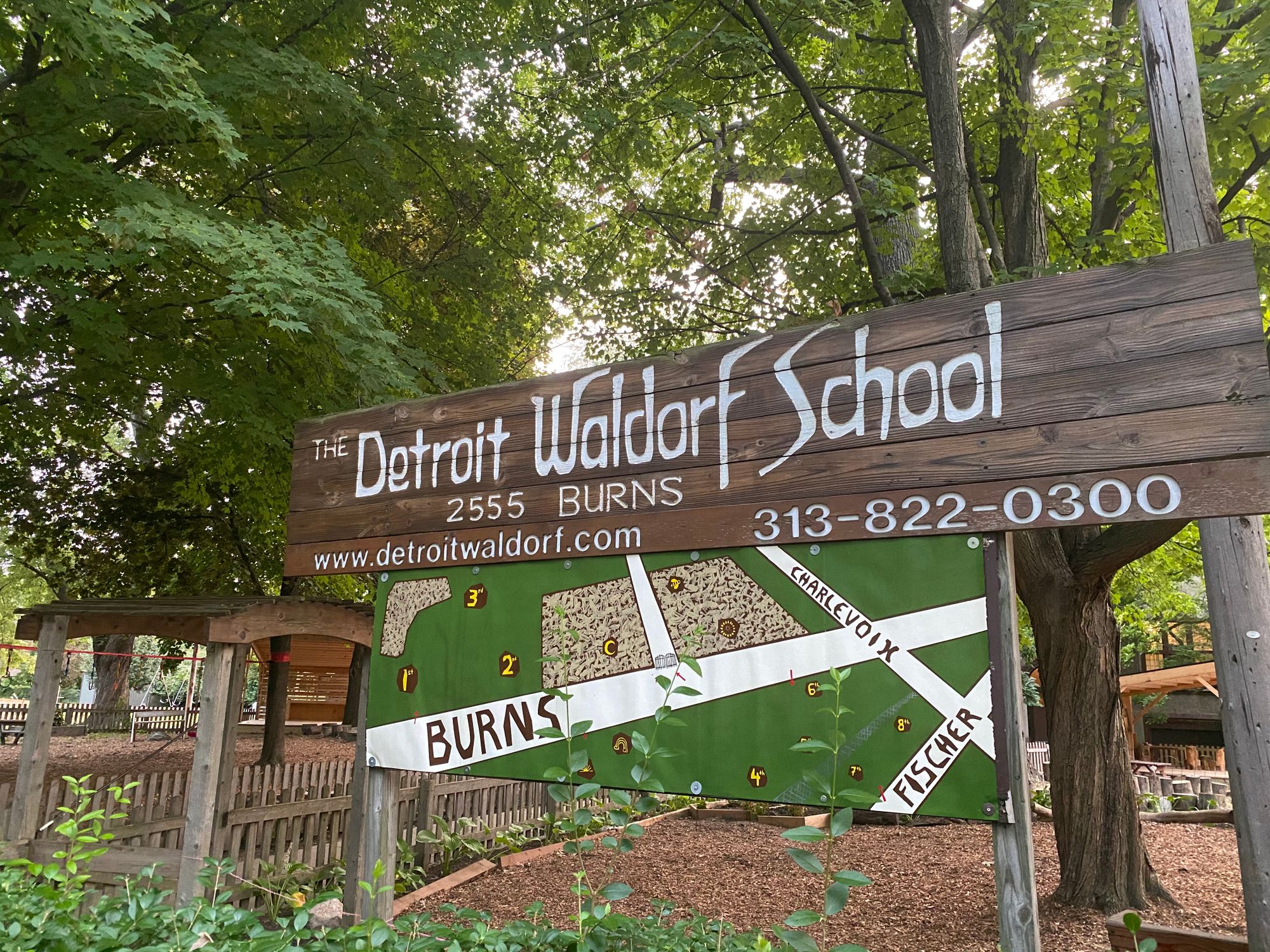
These outdoor classrooms were a product of the school reacting to the pandemic but I hope they stay.
Stewart Brand in his series and book How Buildings Learn argues that the most loved buildings favor adaptability. I see an element of that here. Outdoor spaces adapted to a changing reality.
As I was wondering how to introduce more agency in how I think about these choices my mind went towards the direction of food. These are some of the things I use in different quantities when I'm looking to add degrees of heat to a meal.
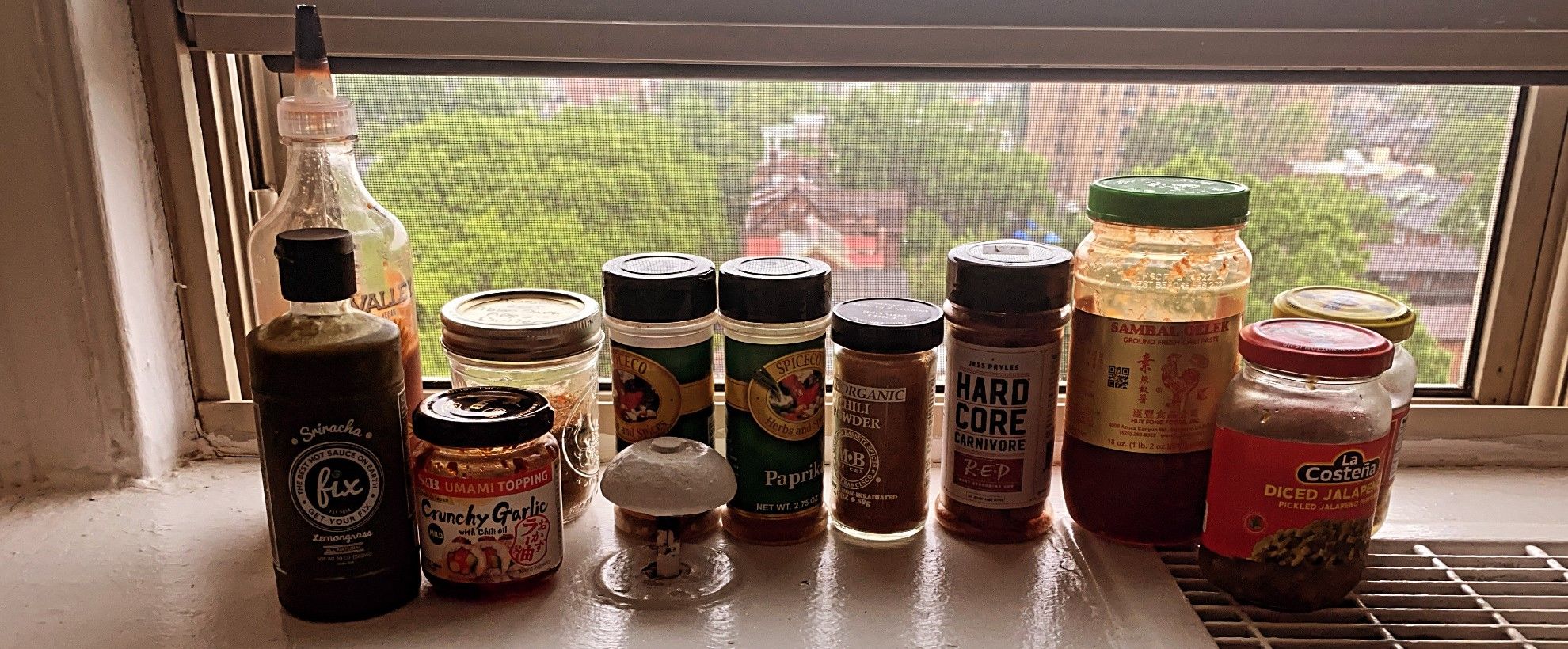
When I first started cooking for myself about 15 years ago I largely relied on red chili powder to add some heat to my meals. Once I discovered Sriracha that became a second option depending on what I was trying to make. Over the years, as I've enjoyed my time in the kitchen more and more, the choices I afford myself have increased. I don't spend a lot more time contemplating each individual action because I've iteratively improved my understanding of the choices available to me.
I wonder if we can use a similar frame of mind to change our approach to default spaces and thus to choose and design spaces for thought, play, love, learning, work, and sleep. Small decisions at a time. Iterative explorations, as opposed to one high-pressure swooping choice, might help us better understand how to go beyond the captivity of default spaces.
I spent my first grade in a small, beautiful, hillside town in south India called Coonoor. Most days either my grandmother or nanny would walk me to school through a wonderful, wooded path. It felt a lot like a forest to a young Rahul. While the classroom setting of the school, Stanes Anglo Indian Higher Secondary School, is not particularly memorable, I can still feel the emotions associated with skipping through this wooded path, finding the occasional porcupine quill, asking out loud if I'd see a snake or tiger.
Outside of that year of my life, I've spent almost all my life in large cities. However, I still have a very similar fascination with wildlife and attribute it to, at least in part, the choice of walking down that wooded path to school all those years ago.
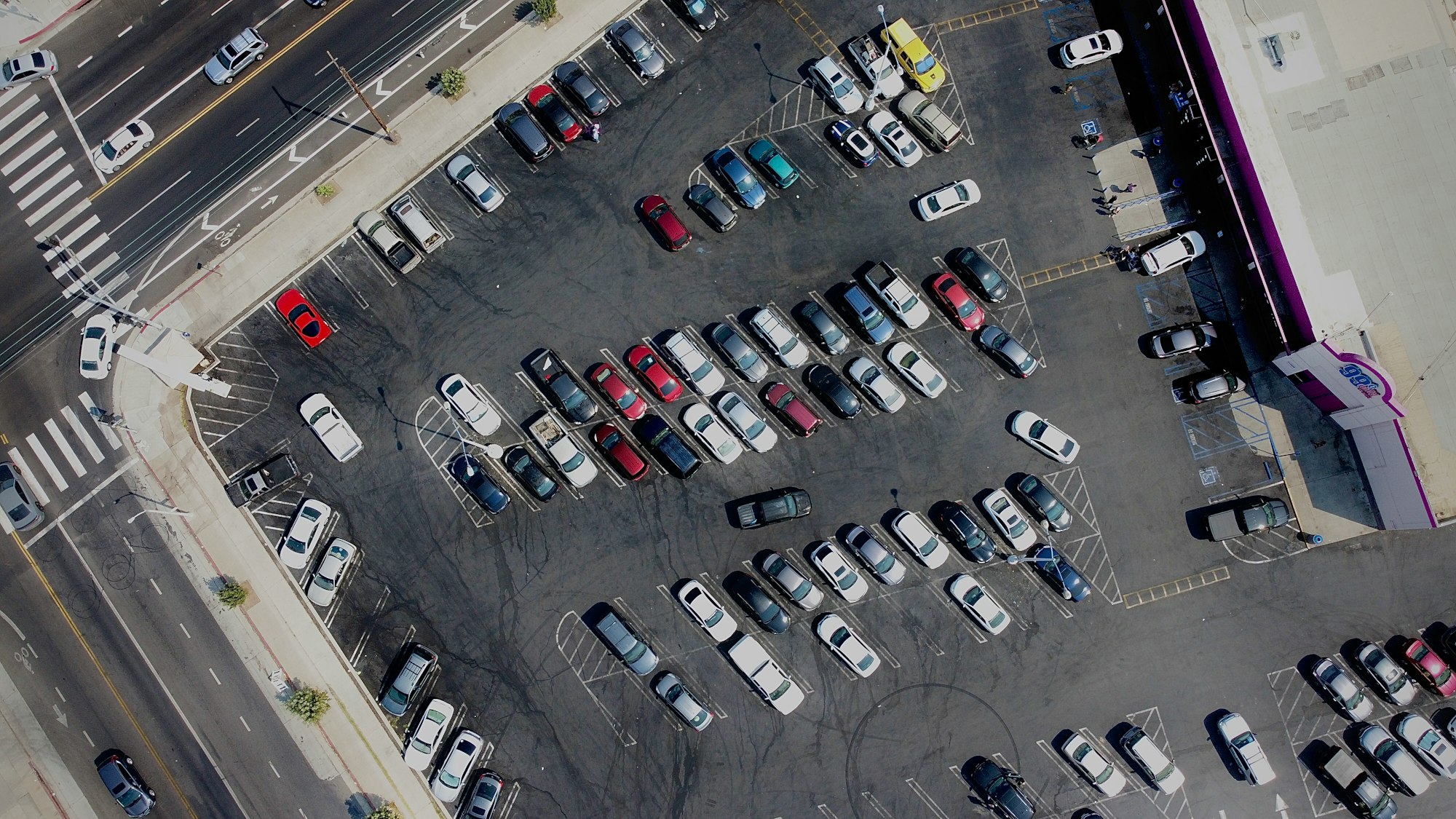
As you can likely tell, the thoughts in this piece are a work in progress. It is a direction in which I'm attempting to move and principles I'm trying to solidify. Not definitive answers. With that spirit in mind, here is an incomplete list of things I'm contemplating as it relates to default spaces and escaping them.
Big-box store parking lots – I spent a large portion of the pandemic relying on two magnificent local businesses, Sister Pie and Marrow, for almost all my food needs. This included things like vegetables, meat, and many necessities for the pantry. Once things started to open back up a little, I made my first visit in a long time to a big-box grocery store. My reaction, just when entering the parking lot was visceral, and made me realize how I want to minimize my time in large messy parking lots and the stores that surround them. This has meant and will continue to mean more time at places like Sister Pie and Marrow. This also has wonderful, delicious side effects like eating sustainable and humanely raised beef. Again, this is directional, not definitive. I'm unsure if I can avoid ever stepping foot in a Lowes for home improvement supplies but it does mean I may first try and shop at a place like Durst Lumber in Berkley instead.
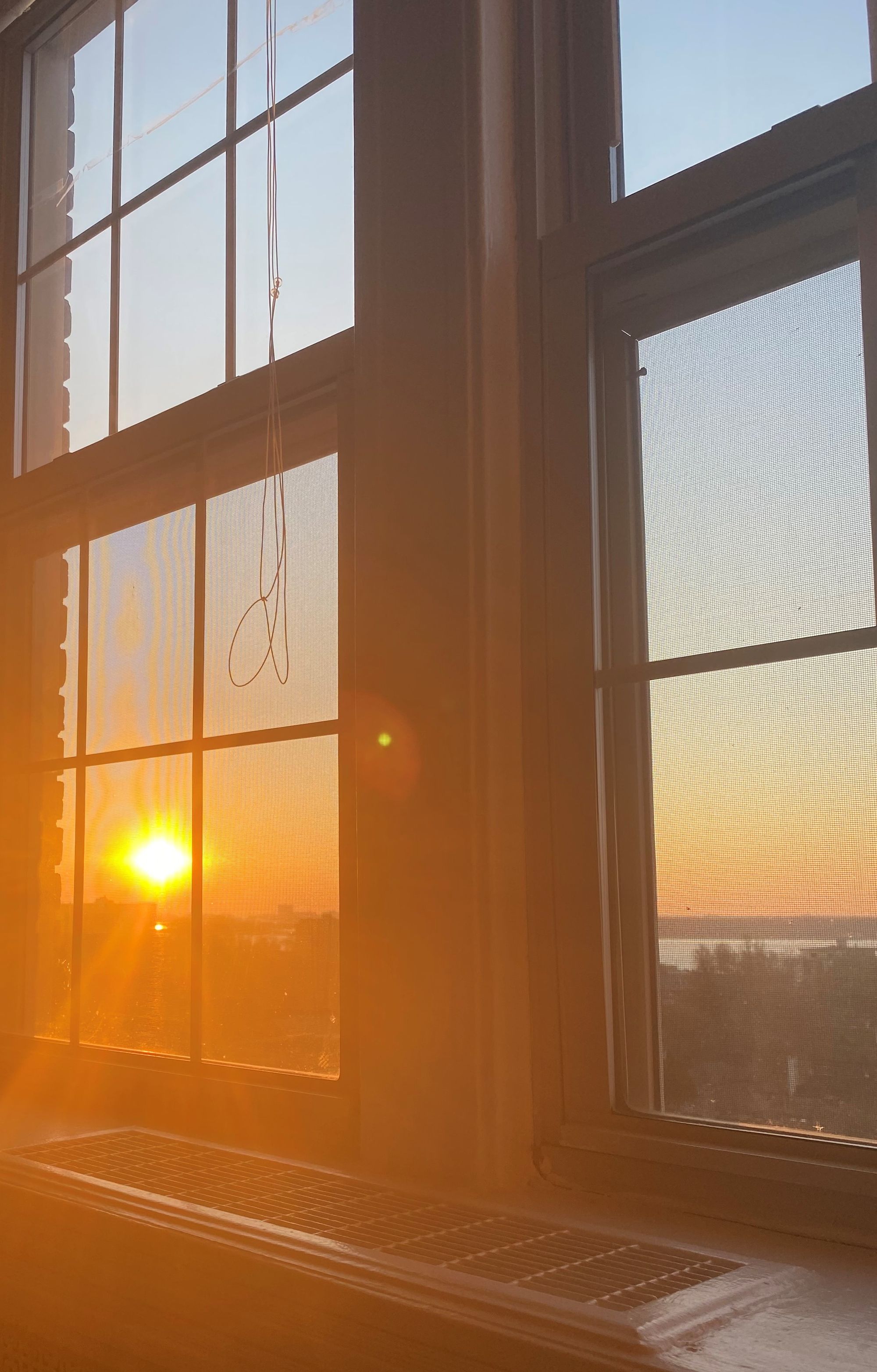

Light – We talk a lot about the importance of light but I've noticed how it is something we easily compromise when choosing our spaces. I live in an apartment where the light of the morning sun hits at a wonderful angle. It approaches gradually, relatively unobtrusively, and results in me waking up naturally most days in the summer. I underrated the significance of this light in the past. Now it's making me contemplate the Michigan / Florida "snowbirds" in a whole new, well, light. While the cold isn't a huge bother to me and I actually think most of us need more cold in our lives, the benefit of sunlight from the right direction at the right time of the day seems like it needs to have a lot more significance in my choices of spaces.
First-order retrievability – This comes from Adam Savage of Mythbusters fame. The basic idea is that you should not store things behind other things. If you need to access something it should be right there in front of you not behind a row of other things. Adam talks about it in the context of his toolbox. It's very similar to the idea of mise-en-place (everything is in its place) when you are cooking. This is not how my spaces are organized today which results in, for example, many pantry items being hidden for months. This is also more precise than being "organized". It requires making decisions that might mean you use less of the space you have in order to make it more meaningful and accessible for you.
Separate spaces for thought vs. productivity – Not everyone has this luxury however separate spaces for where you engage in thinking as opposed to where you need to get stuff done seems useful. I live in a relatively small one-bedroom apartment which means I have two options in terms of spaces. My bedroom which also has a desk and doubles as my office, and then my living room. My desk is at a distance from the window and so is comparatively distanced from outside distractions. This has meant I'm more inclined to get through a to-do list but less inclined to do any creative or other thinking. The chairs I sit at when I'm in my living room however are right by the window. I can look at the water and see the trees. I'm certainly more distracted here but have found it more conducive for when I'm thinking, reading, or writing.
Living through a pandemic has to some degree changed how we think about spaces especially work and productivity. We are all putting more thought into whether we want to return to our default office spaces or spend that time at home instead. The trap here is that I think we are limiting ourselves to two default options, neither of which may provide the nourishment we need.
This study from the University of Chicago seems to find that, for the population they assessed, work from home led to more hours worked, more meetings, and less productivity. I'm not a proponent of having everyone go back into the workplace but am questioning the binary choices.
Total hours worked increased by roughly 30%, including a rise of 18% in working after normal business hours. Average output did not significantly change. Therefore, productivity fell by about 20%. Time spent on coordination activities and meetings increased, but uninterrupted work hours shrank considerably. Employees also spent less time networking, and received less coaching and 1:1 meetings with supervisors.
Sound – Music is a large part of my mental health and my small apartment now has three speakers with a fourth likely to be ordered soon. This would have seemed like a frivolous expense to me maybe ten years ago but having the option to have music (or an audiobook) playing in each room, including my bathroom and kitchen, has been very meaningful to me. My living room and kitchen are adjoining but I can't hear the music clearly over the sound of the water in the kitchen sink or red onions frying in the pan.
How we think about sound changes depending on what space we are thinking about. Open office spaces have gotten very popular over the past 5+ years even though most people I talk to complain about how they can't get any work done given the noise and distraction.
Another area I'm using sound as a qualifier is when I'm determining what to add to my list of favorite watering holes. Bars, whether dive bars or cocktail bars, require a certain acoustic quality. You need to hear the music but it shouldn't drown out your conversation. You don't really want to hear the people around you but they should provide enough white noise to the ambiance.
Straying from default choices may not require burning it all to the ground first. Some nuanced thought and iterative changes could make all the difference. There was an idea from How Buildings Learn that I especially enjoyed.
Well-made buildings are fractal—equally intelligent at every level of detail.
I'd like to, over time, use this idea and some of the other considerations I've laid out above as a guide for how I think about my spaces, adding intelligence to every level of detail, but doing that iteratively over time.